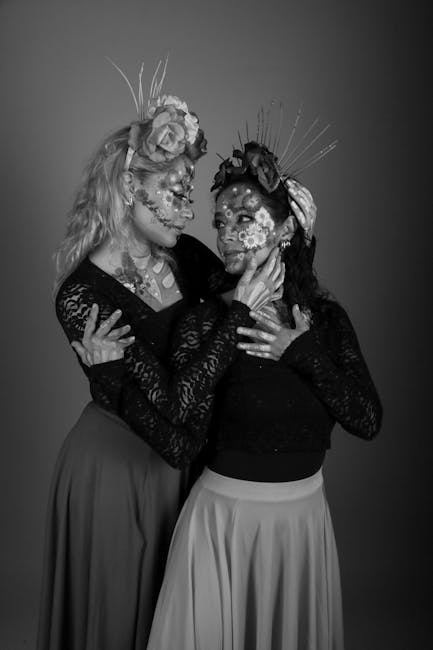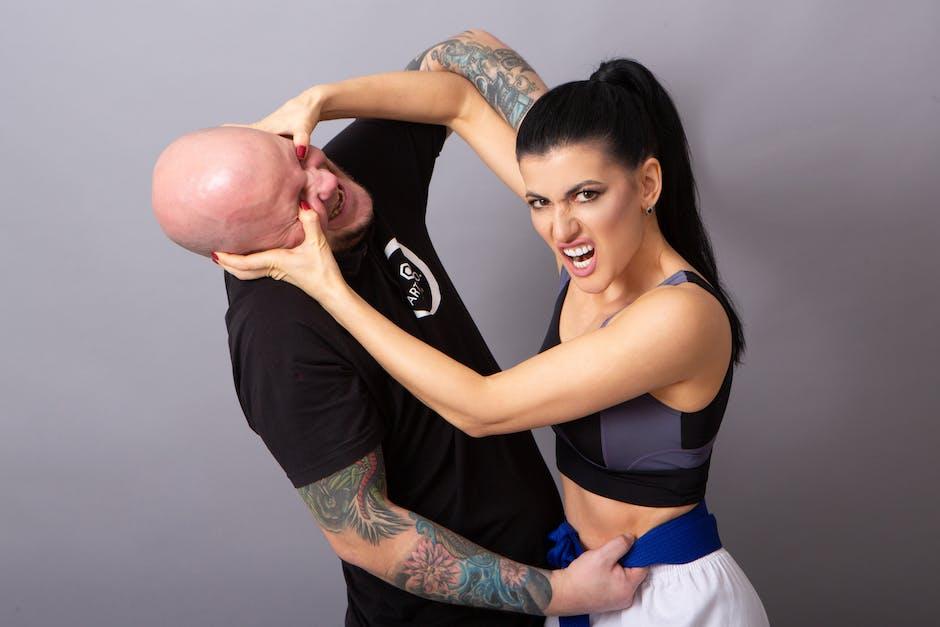Dance is a powerful tool for emotional expression and healing, offering a unique way to communicate feelings without words.
It’s like a universal language that everyone can understand, no matter where they’re from.
This blog post will explore how dance connects with emotions, the therapeutic benefits it offers, and how it can be a path to emotional well-being.
So, put on your dancing shoes and join us on this journey!
Key Takeaways
- Dance has a deep historical connection with emotional expression.
- Dance Movement Therapy (DMT) uses structured and improvisational techniques for healing.
- Authentic Movement helps individuals connect with their emotions.
- Somatic practices like the Feldenkrais Method and Laban Movement Analysis aid emotional healing.
- Dance practices such as 5Rhythms and Movement Medicine promote emotional release.
- Exploring the relationship between dance and food can offer insights into emotional eating.
Introduction to Dance and Emotional Expression
The historical connection between dance and emotions
Dance has been a part of human culture for thousands of years.
From ancient rituals to modern performances, dance has always been a way to express emotions and tell stories.
In many cultures, dance is used to celebrate, mourn, and connect with others.
It’s like a time machine that takes us back to our roots, showing us how our ancestors expressed their feelings through movement.
The universal language of movement
Imagine a world where everyone speaks the same language.
That’s what dance is—a universal language that transcends borders and cultures.
Through dance, people can express joy, sadness, anger, and love without saying a word.
It’s like a secret code that everyone can understand, making it a powerful tool for emotional expression.

Dance Movement Therapy
Definition and principles
Dance Movement Therapy (DMT) is a form of therapy that uses movement to help people express their emotions and heal.
It’s based on the idea that the body and mind are connected, and that movement can help release emotions that are trapped inside.
DMT is like a dance party for your soul, where you can let go of your worries and just be yourself.
Techniques used in Dance Movement Therapy
Structured movement exercises
In DMT, structured movement exercises are used to help people explore their emotions.
These exercises are like a dance routine that guides you through different movements, helping you connect with your feelings.
It’s like following a map that leads you to the treasure of emotional healing.
Improvisational dance
Improvisational dance is another technique used in DMT.
It’s like a freestyle dance where you can move however you want, without any rules or restrictions.
This freedom allows you to express your emotions in a way that’s authentic and true to yourself.
It’s like painting a picture with your body, where every movement is a brushstroke of emotion.
Benefits for emotional expression and healing
DMT offers many benefits for emotional expression and healing.
It can help reduce stress, improve mood, and increase self-awareness.
It’s like a magic potion that helps you feel better and more connected to yourself and others.
By moving your body, you can release pent-up emotions and find a sense of peace and balance.

Authentic Movement and Emotional Connection
The practice of Authentic Movement
Authentic Movement is a practice where individuals move spontaneously, without any predetermined steps or choreography.
It’s like a dance with your inner self, where you listen to your body and let it guide you.
This practice can help you connect with your emotions and gain insights into your inner world.
How spontaneous movement aids emotional awareness
Spontaneous movement in Authentic Movement allows individuals to become more aware of their emotions.
It’s like opening a window to your soul, where you can see and feel what’s going on inside.
By moving freely, you can explore your emotions and gain a deeper understanding of yourself.
Personal journeys and stories
Many people have found healing and transformation through Authentic Movement.
Their stories are like a tapestry of experiences, woven together by the threads of dance and emotion.
These personal journeys show how dance can be a powerful tool for emotional healing and self-discovery.

Somatic Practices and Emotional Healing
The History of Somatics
Somatics is a field that focuses on the connection between the body and mind.
It’s like a bridge that links physical movement with emotional healing.
The history of somatics is rich and diverse, with many different practices and approaches that have evolved over time.
For more on this fascinating history, check out this blog.
The Feldenkrais Method
Awareness through movement
The Feldenkrais Method is a somatic practice that uses gentle movements to increase awareness and improve physical and emotional well-being.
It’s like a gentle massage for your mind and body, helping you become more aware of your movements and emotions.
Emotional healing through physical expression
Through the Feldenkrais Method, individuals can release emotional tension and find healing.
It’s like peeling away layers of stress and anxiety, revealing a calmer and more balanced self.
By focusing on movement, you can tap into your emotions and find a path to healing.
Laban Movement Analysis
Framework for emotional states
Laban Movement Analysis is a system that analyzes movement patterns and their connection to emotions.
It’s like a detective tool that helps you uncover the hidden emotions behind your movements.
By understanding these patterns, you can gain insights into your emotional state and find ways to express and heal.
Application in therapeutic settings
Laban Movement Analysis is used in therapeutic settings to help individuals explore their emotions and find healing.
It’s like a roadmap that guides you through the landscape of your emotions, helping you find your way to emotional well-being.

Dance Practices for Emotional Release
5Rhythms
The role of rhythm in emotional release
5Rhythms is a dance practice that uses different rhythms to help individuals release emotions.
It’s like a musical journey that takes you through different emotional landscapes, allowing you to express and release your feelings.
The rhythms act as a guide, helping you navigate the waves of emotion and find a sense of release.
Connection through movement
Through 5Rhythms, individuals can connect with themselves and others.
It’s like a dance party where everyone is invited, and you can feel the energy and connection with those around you.
This sense of connection can be a powerful tool for emotional healing and expression.
Movement Medicine
Integration of dance and self-awareness
Movement Medicine is a practice that combines dance with self-awareness and mindfulness.
It’s like a meditation in motion, where you can explore your emotions and find a sense of balance and peace.
By integrating dance with self-awareness, you can tap into your emotions and find healing.
Fostering emotional healing
Movement Medicine fosters emotional healing by allowing individuals to express their emotions through dance.
It’s like a safe space where you can let go of your worries and just be yourself.
By moving your body, you can release emotional tension and find a sense of calm and balance.
Dance and the Relationship with Food
Exploring emotional eating through movement
Dance can also be used to explore the relationship between emotions and food.
It’s like a dance with your cravings, where you can understand the emotional triggers behind your eating habits.
By moving your body, you can gain insights into your relationship with food and find healthier ways to cope with emotions.
Somatic practices linking nourishment and emotional expression
Somatic practices can help individuals connect their emotions with their eating habits.
It’s like a puzzle where you can piece together the connection between your emotions and your relationship with food.
By exploring this connection, you can find ways to nourish your body and soul.
Insights from the Fully Expressed Podcast
The Fully Expressed Podcast offers insights into the connection between dance, emotions, and food.
It’s like a treasure trove of wisdom, where you can learn from experts and gain new perspectives on emotional expression and healing.
For more insights, check out the podcast.

Conclusion
The transformative power of dance in emotional healing
Dance is a powerful tool for emotional healing and expression.
It’s like a magic wand that can transform your emotions and help you find a sense of peace and balance.
By moving your body, you can release pent-up emotions and find healing.
Encouragement to explore personal dance practices for emotional well-being
We encourage you to explore your own dance practices and find what works for you.
It’s like a journey of self-discovery, where you can find new ways to express your emotions and heal.
So, put on your dancing shoes and let the music guide you to emotional well-being.
For more on how dance can support emotional expression, check out this article.
Dance is not just a form of art; it’s a way to connect with yourself and others.
So, let’s dance our way to emotional healing and well-being!
Discover the Rhythm of Healing: An FAQ on The Role of Dance in Emotional Expression and Healing
How does dance facilitate emotional expression?
Dance allows individuals to express emotions through movement, bypassing the limitations of verbal communication. It provides a non-verbal outlet for emotions, enabling dancers to convey feelings such as joy, anger, sadness, or love through their body language and movement patterns.
What are the psychological benefits of dance?
Engaging in dance can lead to improved mental health by reducing stress, anxiety, and depression. The rhythmic movements and music can elevate mood, enhance self-esteem, and foster a sense of accomplishment, contributing to overall psychological well-being.
Can dance be used as a therapeutic tool?
Yes, dance therapy is a recognized form of psychotherapy that uses movement to support emotional, cognitive, and physical integration. It can help individuals process trauma, improve body image, and enhance social skills, making it a valuable tool in therapeutic settings.
What role does dance play in cultural expression and identity?
Dance is deeply rooted in cultural traditions and can be a powerful expression of cultural identity. It allows individuals to connect with their heritage, share cultural stories, and preserve traditions, fostering a sense of belonging and community.
How does dance contribute to physical health?
Dance is an excellent form of physical exercise that improves cardiovascular health, enhances flexibility, and strengthens muscles. It also boosts coordination and balance, making it a holistic activity that benefits both the body and mind.
In what ways can dance improve social connections?
Participating in dance can enhance social interactions by bringing people together in a shared activity. It encourages teamwork, communication, and empathy, helping to build strong social bonds and a sense of community among participants.
How can dance help in managing stress?
Dance provides a physical outlet for releasing tension and stress. The combination of movement and music can create a meditative state, allowing individuals to disconnect from daily worries and focus on the present moment, promoting relaxation and mental clarity.
What types of dance are most effective for emotional healing?
While any form of dance can be beneficial, expressive dance styles like contemporary, improvisational, and therapeutic dance are particularly effective for emotional healing. These styles encourage personal expression and creativity, allowing individuals to explore and release emotions freely.
Is dance suitable for all age groups in terms of emotional expression and healing?
Absolutely, dance is a versatile activity that can be adapted for all age groups. From children to seniors, dance provides a safe and enjoyable way to express emotions and promote healing, with modifications available to accommodate different physical abilities and needs.
How can someone start using dance for emotional expression and healing?
To begin using dance for emotional expression and healing, one can join dance classes, workshops, or therapy sessions that focus on expressive movement. It’s important to choose a style that resonates personally, and to approach dance with an open mind and willingness to explore emotions through movement.



